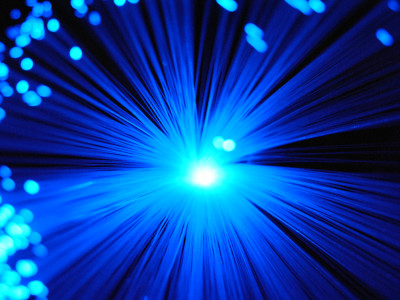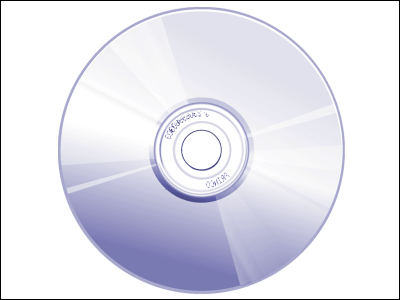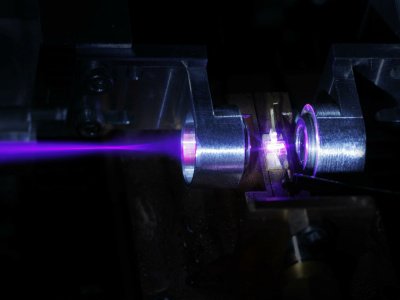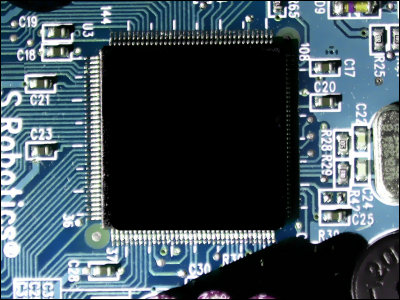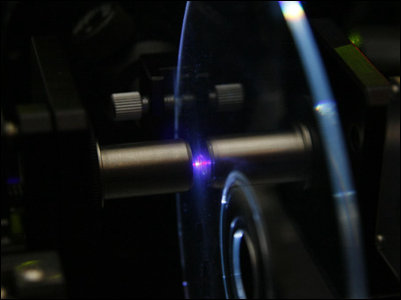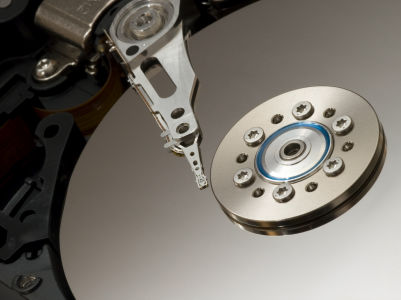Hitachi and Kyoto University jointly developed technologies capable of storing digital data for hundreds of millions of years
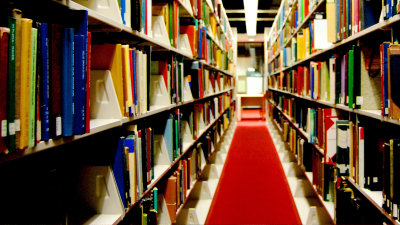
ByPaul Lowry
Hitachi and Kyoto University Faculty of Engineering, Technology for Recording and Playing Data of Capacity Like CD in Quartz GlassMiura Kiyotaka Lab.Developed jointly. Quartz glass is excellent in heat resistance and water resistance, and as a result of accelerated test for high temperature deterioration, it seems that data can be stored for a long time in the future for several hundred million years.
Digital data of CD-like capacity inside the quartz glass
Development of technology to record and reproduce
A digital archive capable of withstanding hundreds of millions of years of data storage is realized
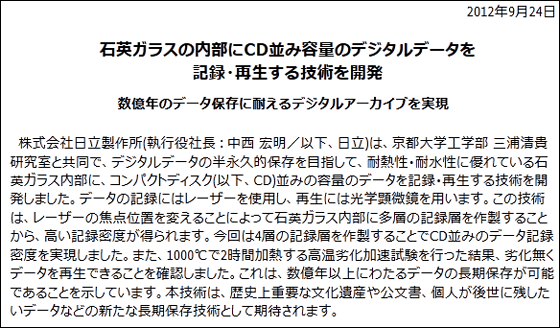
In 2009 HitachiDevelopment of next-generation memory technology capable of stably storing digital data for over 100,000 yearsHowever, in this case, we confirmed that quartz glass excellent in heat resistance and water resistance is useful as a storage. However, in order to put it into practical use, it was necessary to have technology that can record data at high speed and high density, and can easily reproduce it.
When quartz glass is irradiated with a femtosecond pulsed laser, minute regions (dots) with different refractive indices are formed. Hitachi recorded digital data with "1" for this dot and "0" for no dot, Hitachi recorded multilayer recording technology optimizing laser power, dot spacing and depth High density recording achieved. In addition, we have developed a batch recording technology that records 100 dots at a time by using a spatial phase modulator that two-dimensionally modulates the amplitude and phase of light, and also realized an improvement in recording speed.
On the other hand, when reproducing data, use a commercially available optical microscope. Normally, when photographing quartz glass recorded in multiple layers, the dots of other layers become noise, but we developed a technique to accurately read the recorded data divided into 4 layers this time, To-noise ratio (SN ratio) equivalent to 15 dB playback achieved.
The recording pattern looks like this

When this is photographed normally with an optical microscope, the dot image looks like this
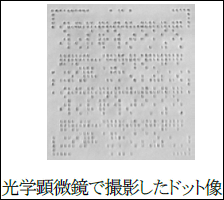
This is modified by the contour emphasis processing technology developed this time
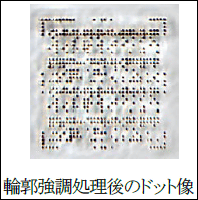
Four-layer recording on quartz glass with developed technology realized 40 MB per square inch, which exceeds 35 MB per square inch which is the recording density of CD. In addition, when heating test at 1000 ℃ for 2 hours corresponding to storage period of more than several hundred million years was carried out, it was confirmed that data can be reproduced without deterioration even after the test.
Perhaps, long-term storable media that cross the stone board finally may have appeared. IfBlack historyIt seems to be a serious thing if you save it ... ....
Related Posts:
in Science, Posted by logc_nt
